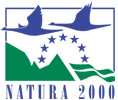 |
 |
|
|
Snowploughs are used on Great Bustard conservation sites for clearing the snow away, as the thick layer of snow hinders bustards to reach their food sources, plants on ground surface especially when the surface of the snow becomes icy.
In protected areas those rape fields are to be cleared, which are planted for them, in order to prevent the birds from dying and migrating because of the lack of food. When hard winters occur, and the birds are forced to migrate, many of them weakens and perish. Moreover, in spite of the fact, that Great Bustard is considered as a globally endangered species and is protected by several international conventions, local people of the southern countries often shoot them if they can.
Hungary has a huge role and responsibility in the protection of the species, as the strongest population in Central Europe lives here. The latest Great Bustard census was organized in the middle of January. Conservation experts registered 1300 individuals which is a better result than compared to the census of last year.
This growth is good news, a result of systematic conservation work for decades performed by the experts of Birdlife Hungary (MME) and the national parks.
The conservation of Great Bustard is supported by the European Union from 2004. The so called LIFE Nature Fund supports the conservation activity with almost 500 million forint, thus the LIFE Conservation Programme for Great Bustard is the biggest national conservation programme supported from EU Funds.
Due to the clearing the snow away and foddering at the same time this winter expectedly will not cause significant losses in the Hungarian population.
|



